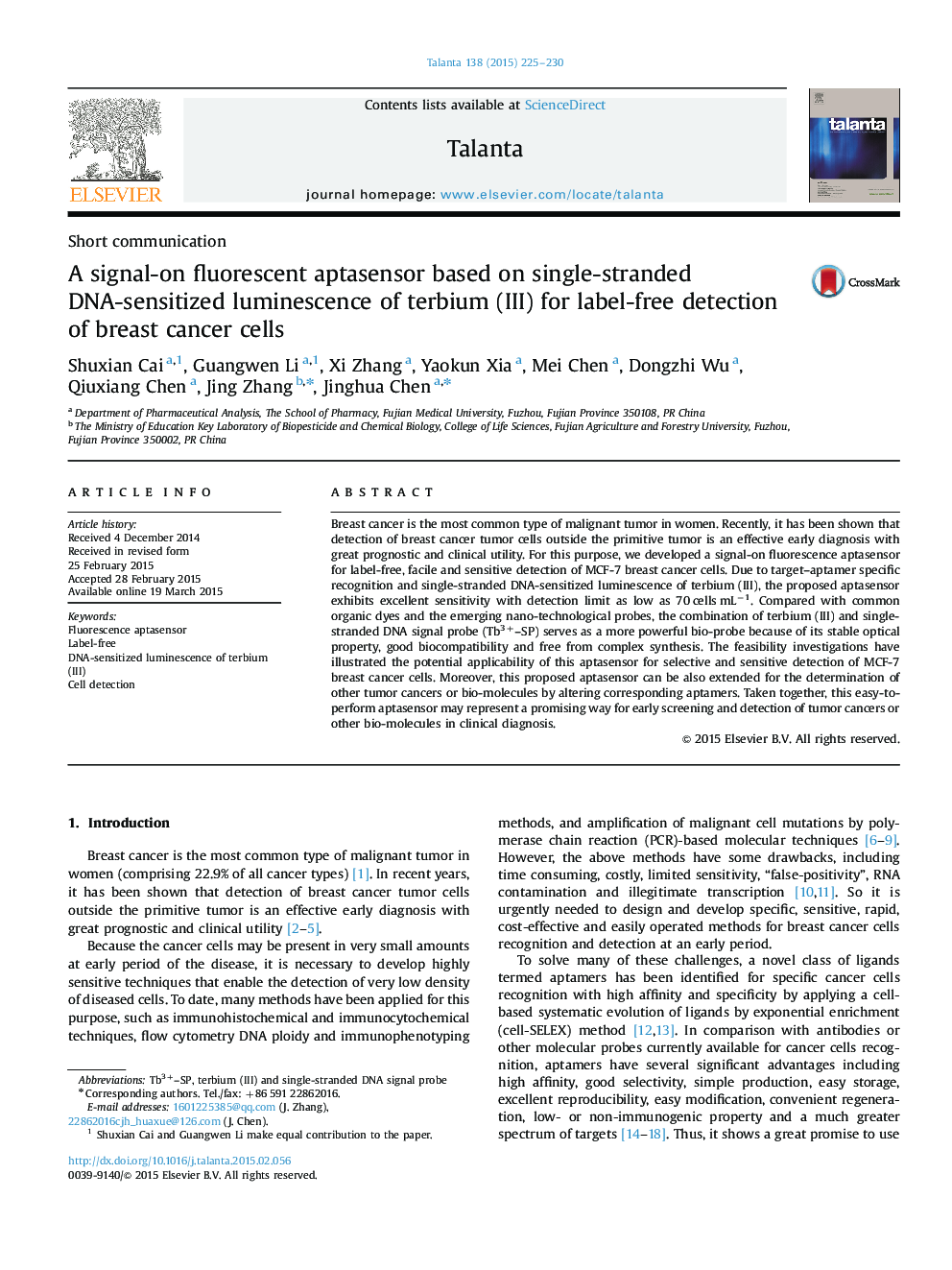| Article ID | Journal | Published Year | Pages | File Type |
|---|---|---|---|---|
| 1243354 | Talanta | 2015 | 6 Pages |
•An aptasensor based on DNA-sensitized luminescence of terbium (III) was fabricated.•The aptasensor is free from any laborious immobilization, labeling and modification.•The aptasensor shows excellent selectivity and sensitivity detection of MCF-7 cells.•The aptasensor can be also extended for the detection of other targets.
Breast cancer is the most common type of malignant tumor in women. Recently, it has been shown that detection of breast cancer tumor cells outside the primitive tumor is an effective early diagnosis with great prognostic and clinical utility. For this purpose, we developed a signal-on fluorescence aptasensor for label-free, facile and sensitive detection of MCF-7 breast cancer cells. Due to target–aptamer specific recognition and single-stranded DNA-sensitized luminescence of terbium (III), the proposed aptasensor exhibits excellent sensitivity with detection limit as low as 70 cells mL−1. Compared with common organic dyes and the emerging nano-technological probes, the combination of terbium (III) and single-stranded DNA signal probe (Tb3+–SP) serves as a more powerful bio-probe because of its stable optical property, good biocompatibility and free from complex synthesis. The feasibility investigations have illustrated the potential applicability of this aptasensor for selective and sensitive detection of MCF-7 breast cancer cells. Moreover, this proposed aptasensor can be also extended for the determination of other tumor cancers or bio-molecules by altering corresponding aptamers. Taken together, this easy-to-perform aptasensor may represent a promising way for early screening and detection of tumor cancers or other bio-molecules in clinical diagnosis.
Graphical abstractA signal-on fluorescent aptasensor based on single-stranded DNA-sensitized luminescence of terbium (III) for detection of breast cancer cells.Figure optionsDownload full-size imageDownload as PowerPoint slide
